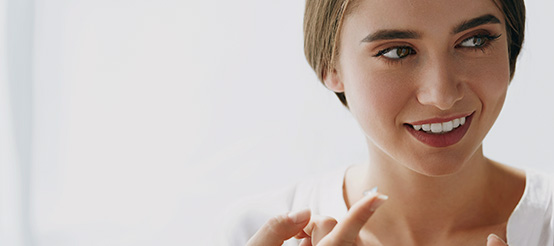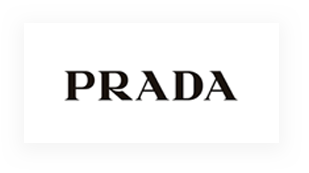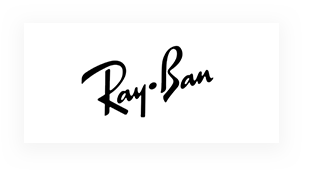
Dry eye affects a great many people, in Alberta especially. A survey from 2019 by the Alberta Association of Optometrists revealed that as many as 90% of Albertans experience dry eye symptoms regularly, some without awareness of the condition.
A visit to your optometrist for a regularly scheduled eye exam can provide a diagnosis for those experiencing symptoms. And if you have dry eye, there are a number of dry eye treatments that can provide relief. You might be tempted to grab some over-the-counter eye drops and call it a day when you experience symptoms—but prescription eye drops might be a better fit for you.
What is Dry Eye
Dry eye is an umbrella term for a handful of issues that can develop with your eye’s moisture. Your eye is a bit like an ecosystem, with parts that depend on other parts, and if there’s imbalance, dry eye might be the result. Dry eye can come in more than one subtype, and severity can differ between patients.
Dry Eye & Your Cornea
Your cornea is a sensitive tissue most at risk when you develop a more severe case of dry eye. It’s the transparent dome-shape that protrudes from the whites of your eyes, and it covers your iris, pupils, and the parts of the eye behind it—all in careful alignment.
This tissue is a lot like skin, but it needs a lot of moisture to perform a focusing function for your eye. It also lacks blood vessels so it needs oxygen from water instead of blood to stay alive. If you ignore symptoms and dry eye spirals out of control, dry eye could warp or cloud your cornea, probably requiring surgery.
Tear Film
To draw oxygen from water instead of blood cells, your eye needs help. The tear film is a balanced multi-layer of fluids that allows even distribution of water to your corneas. It’s supposed to evaporate slowly and keep centered on your cornea while providing the water your corneas need.
At the base of the tear film is the mucous layer, which helps to prevent water from pooling at the bottom eyelids, produced by the conjunctiva and other specialized cells in the cornea. On top of the mucous layer are the watery tears from your lacrimal gland. On top of your natural level of tears, is the anti-evaporative oil layer, produced by the meibomian glands in your eyelids.
Different Types of Dry Eye
Dry eye comes in several different types because your tear film can be unbalanced in several different ways. But dry eye tends to fall into 2 major categories: aqueous tear-deficient dry eye, and evaporative dry eye.
Evaporative Dry Eye
Evaporative dry eye (EDE) means your tears evaporate near the same rate as water. Your oil layer ensures they don’t evaporate so quickly, but if your meibomian glands are blocked or under-producing, there won’t be enough oil to keep your tears at a normal level. Common symptoms include pain and redness.
Aqueous Tear-Deficient Dry Eye
If your actual tear volume is the issue, several sources might be to blame. Aqueous tear-deficient dry eye results from your lacrimal glands’ difficulty producing your base-level of tears—so there isn’t enough oxygen or moisture for the cornea. Tear-deficient dry eye can come from:
Like EDE, your eyes may show redness and feel itchy, among other symptoms. But the key difference is in the volume of your tears. Your tear film might need something as simple as over-the-counter (OTC) artificial tears or they might require something more targeted.
Prescription Eye Drops Can Speed Your Relief
In medical terms, prescriptions treat the root causes of your dry eye. The type of dry eye you have certainly affects your eye doctor’s choice of eye drops. It might be that your type of dry eye requires an agent to help the meibomian glands. Getting prescription eye drops for aqueous tear-deficient dry eye might include eye drops that assist or supplement your lacrimal glands.
Writing prescriptions remains a pillar of the education and training optometrists receive, so it can really supercharge a dry eye treatment plan when you do. Instead of treating the symptom, you can pursue relief.
How Prescription & Non-Prescription Eye Drops Differ
Non-prescription eye drops are those you can buy over-the-counter (OTC). One of the most common types of OTC eye drops are artificial tears—a supplement to your basal (natural) tears. But that’s not always the case; some artificial tears like the FreshKote brand, require a prescription.
Artificial tears help patients with aqueous tear-deficient dry eye, but because they treat the symptom, not the cause, the help they provide is limited. In some cases overreliance on them can actually lead to complications of dry eye, instead of providing consistent relief.
Advantages of Prescription Eye Drops
To keep up with inventory cycles and reduce waste, OTC eye drops contain many preservatives. These ingredients aren’t doing your eyes any favours. And for some patients, these preservatives can lead to an allergic reaction in your eye. Prescription drops deliberately exclude these ingredients.
Sometimes, dry eye can stem from inflammation with various root causes, and steroid or antibiotic ingredients could help. These ingredients are controlled substances. Patients administering them without an eye doctor’s directions are likely to develop infections or eye disease like glaucoma or cataracts. So their usefulness remains under lock and key.
Effective Prescription Eye Drops We Use for Dry Eye
While we might try OTC artificial tears out of the gate for your dry eye treatment, monitoring your eyes’ response to them is crucial. After some tests and assessments, we might eventually settle on 2 very effective prescription eye drops: Restasis and Xiidra. Many of our patients have benefited because of the way they treat the root cause of dry eye.
Xiidra
Xiidra is a prescription for combating inflammation. It soothes inflammation on key cells located on the cornea and conjunctiva (on your eyelids), which helps your mucous layer. That effect eases your dry eye symptoms, granting a more stable tear film.
Restasis
Restasis was designed to help aqueous tear-deficient dry eye patients affected by inflammation in their lacrimal glands. The main draw of this prescription is that can actually help your lacrimal glands produce more tears if need be.
But if you’re taking other anti-inflammatory eye drops like Xiidra, Restasis may upset your tear film. And, it might not be effective, maybe even extending the impact of your symptoms. Getting your prescription drops is important, because your eye doctor needs to balance other prescriptions when writing new ones.
Your Optometrist Can Prescribe for You
Prescription eye drops can’t help everyone, but they provide tremendous relief for patients suffering from inflammation-related dry eye. Diagnosis of the underlying cause of dry eye doesn’t come from your own research, however.
At OK Eye Care, we use advanced diagnostics to determine whether dry eye treatment can leverage prescription eye drops like Restasis or Xiidra. Please ask for help!















